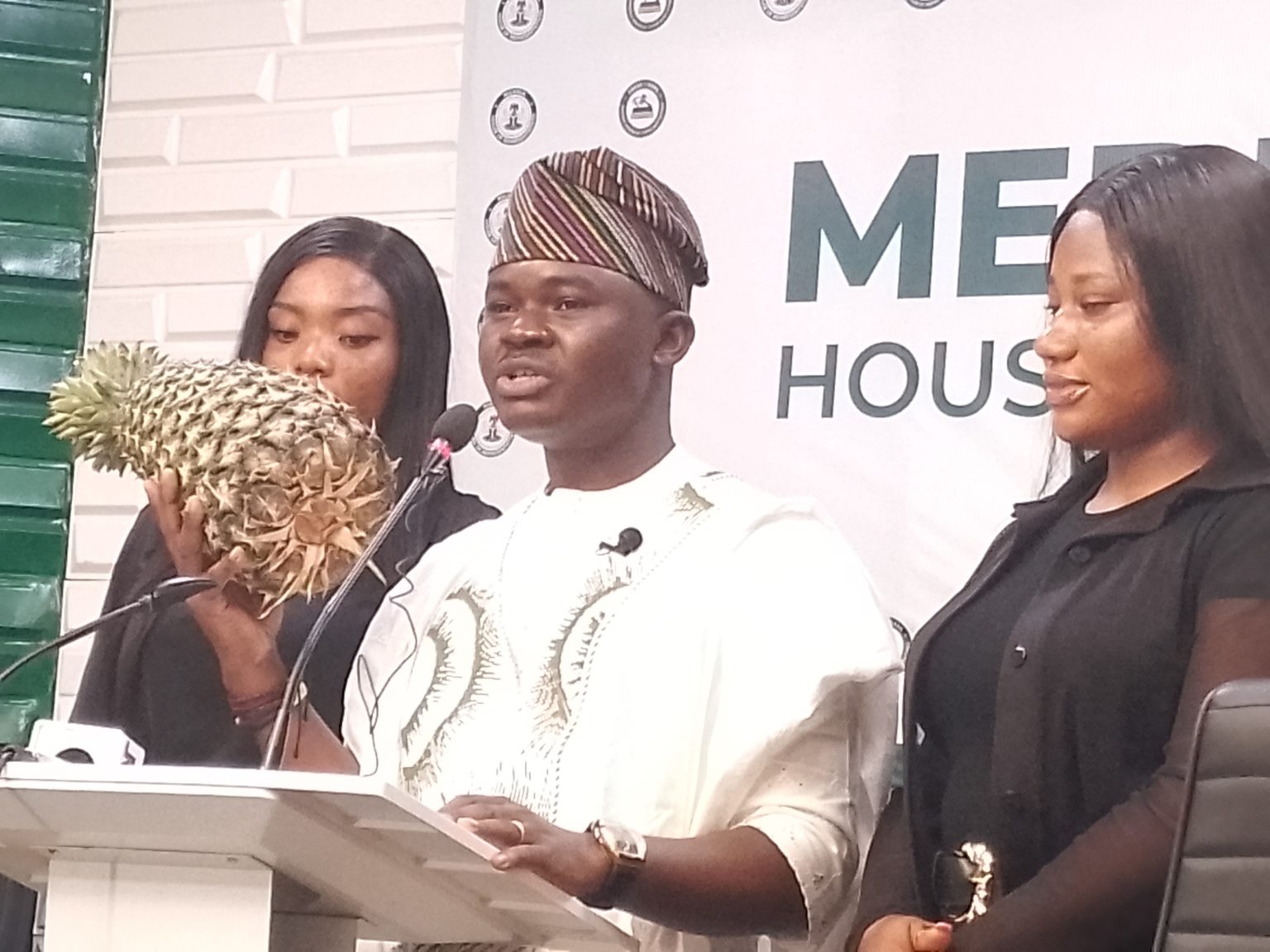Dubai Municipality unveils Circle Dubai project championing Sustainability and Waste Reduction at Asia-Pacific Cities Summit – The Korea Herald

Report on the ‘Circle Dubai’ Initiative and its Alignment with Sustainable Development Goals
Introduction: Project Launch and Strategic Context
On October 29, 2025, during the Asia-Pacific Cities Summit – Mayors Forum, Dubai Municipality announced the launch of ‘Circle Dubai,’ a strategic project focused on sustainable waste management. This initiative reflects the city’s commitment to global sustainability efforts and is aligned with the Dubai Integrated Waste Management Strategy 2041. The project’s launch underscores a direct commitment to achieving key United Nations Sustainable Development Goals (SDGs).
Core Objectives and Contribution to SDG 11 and SDG 12
The primary mission of Circle Dubai is to foster a circular economy by reducing waste generation and promoting recycling. These objectives are in direct support of several SDGs, most notably:
- SDG 11: Sustainable Cities and Communities: The project directly addresses Target 11.6, which aims to reduce the adverse per capita environmental impact of cities, with a special focus on municipal waste management.
- SDG 12: Responsible Consumption and Production: By aiming to divert waste from landfills and enhance recycling, the initiative strongly supports Target 12.5, which calls for a substantial reduction in waste generation through prevention, reduction, recycling, and reuse.
The project’s specific goals include:
- Reducing waste generation at the source.
- Achieving 100% waste source-sorting across all residential areas.
- Diverting various types of waste from landfills.
- Enhancing recycling and treatment processes to meet long-term environmental targets.
Multi-Sectoral Approach and Community Engagement
According to Eng. Adel Al Marzouqi, CEO of the Waste and Sewerage Agency, the initiative is designed to drive collective behavioral change through a sense of shared social responsibility. It targets nine vital sectors within the emirate to ensure a comprehensive impact.
Targeted Sectors:
- Residential
- Commercial
- Industrial
- Agricultural
- Real Estate
- Tourism
- Education
- Waste Management
- Labour Employment
Strategic Implementation: Education and Partnerships
The implementation strategy for Circle Dubai is multifaceted, leveraging technology, education, and collaboration, which aligns with additional SDGs.
Educational Framework (SDG 4: Quality Education)
A digital education system has been developed to provide tailored training content for each targeted sector. This supports SDG Target 4.7 by ensuring learners acquire the knowledge and skills needed to promote sustainable development. Furthermore, the ‘Dubai Sustainability Ambassadors’ programme will be launched to train community representatives as awareness leaders, reinforcing educational outreach through practical, peer-to-peer campaigns.
Partnerships for the Goals (SDG 17: Partnerships for the Goals)
The project is underpinned by a network of private-sector partnerships and a detailed plan for 17 strategic projects. This collaborative model, supported by 26 performance indicators, exemplifies SDG 17, which encourages effective public-private and civil society partnerships to achieve sustainable development objectives.
Vision and Long-Term Impact
H.E Eng. Marwan Ahmed bin Ghalita, Director General of Dubai Municipality, stated that the project’s overarching objective is to raise widespread awareness of the environmental and economic benefits of sustainable waste management. The ultimate vision is to transform Dubai into a zero-waste city, positioning it as a leading global center for sustainability and environmental conservation in line with the 2030 Agenda for Sustainable Development.
Analysis of Sustainable Development Goals in the Article
-
Which SDGs are addressed or connected to the issues highlighted in the article?
The article on Dubai’s “Circle Dubai” project addresses several Sustainable Development Goals (SDGs) through its focus on sustainable urban development, waste management, and collaborative efforts. The primary SDGs identified are:
- SDG 11: Sustainable Cities and Communities: The project is fundamentally about improving urban living by creating a sustainable waste management system. The article explicitly states the project embodies “Dubai’s commitment to supporting global efforts towards sustainable cities” and aims to make Dubai a “leading global centre for sustainability.”
- SDG 12: Responsible Consumption and Production: The core objectives of the “Circle Dubai” initiative, such as “reducing waste generation, promoting recycling, and advancing the circular economy,” directly align with the principles of sustainable consumption and production patterns. The goal is to shift from a linear “take-make-dispose” model to a circular one.
- SDG 17: Partnerships for the Goals: The article highlights that the project’s success relies on collaboration. It mentions being “supported by a network of private-sector partnerships” and implementation “in collaboration with various institutions,” which is the essence of SDG 17.
-
What specific targets under those SDGs can be identified based on the article’s content?
Based on the project’s description, the following specific SDG targets can be identified:
- Target 11.6: By 2030, reduce the adverse per capita environmental impact of cities, including by paying special attention to air quality and municipal and other waste management. The article directly addresses this target through the “Dubai Integrated Waste Management Strategy 2041,” which aims to establish a “comprehensive, sustainable waste management system” and ultimately make Dubai a “zero-waste city.”
- Target 12.5: By 2030, substantially reduce waste generation through prevention, reduction, recycling and reuse. The “Circle Dubai” project’s stated goals to “reduce waste at the source,” “enhance recycling and treatment processes,” and promote a circular economy are a direct implementation of this target.
- Target 17.17: Encourage and promote effective public, public-private and civil society partnerships, building on the experience and resourcing strategies of partnerships. The article explicitly states the project is “supported by a network of private-sector partnerships and a plan to implement 17 strategic projects… in collaboration with various institutions.” This demonstrates a multi-stakeholder approach crucial for achieving sustainable development.
-
Are there any indicators mentioned or implied in the article that can be used to measure progress towards the identified targets?
Yes, the article mentions and implies several indicators that can be used to measure progress:
- Explicit Indicators: The article explicitly mentions that the project is supported by “26 performance indicators.” While these are not detailed, their existence confirms a structured monitoring framework is in place.
- Implied Indicators for Target 11.6 and 12.5: The article implies several key performance indicators through its stated objectives:
- Percentage of waste diverted from landfills: The goal to “divert types of waste from landfills” suggests this is a key metric.
- Rate of source-sorting: The objective to “achieve 100% source-sorting across all residential areas” is a clear, measurable indicator of community participation and waste management efficiency.
- Waste generation per capita: The overarching goal to “reduce waste generation” and become a “zero-waste city” implies that measuring the amount of waste produced per person is a critical indicator of success.
- Implied Indicators for Target 17.17: The number and effectiveness of partnerships can be measured. The article mentions the implementation of “17 strategic projects” in collaboration with partners, which serves as an indicator of the scale of this collaborative effort.
SDGs, Targets, and Indicators Summary
| SDGs | Targets | Indicators |
|---|---|---|
| SDG 11: Sustainable Cities and Communities | Target 11.6: Reduce the adverse per capita environmental impact of cities, particularly in waste management. |
|
| SDG 12: Responsible Consumption and Production | Target 12.5: Substantially reduce waste generation through prevention, reduction, recycling, and reuse. |
|
| SDG 17: Partnerships for the Goals | Target 17.17: Encourage and promote effective public, public-private, and civil society partnerships. |
|
Source: koreaherald.com
What is Your Reaction?
 Like
0
Like
0
 Dislike
0
Dislike
0
 Love
0
Love
0
 Funny
0
Funny
0
 Angry
0
Angry
0
 Sad
0
Sad
0
 Wow
0
Wow
0
















































:focal(1500,1000)/https://media.globalcitizen.org/a6/9a/a69a4720-d8a1-4715-b596-18738d03c05c/rotary_polio_hero_image.jpg?#)







/countries/sri-lanka/photo-credit---dmc-sri-lanka.tmb-1200v.jpg?sfvrsn=dc298bcc_1#)

















